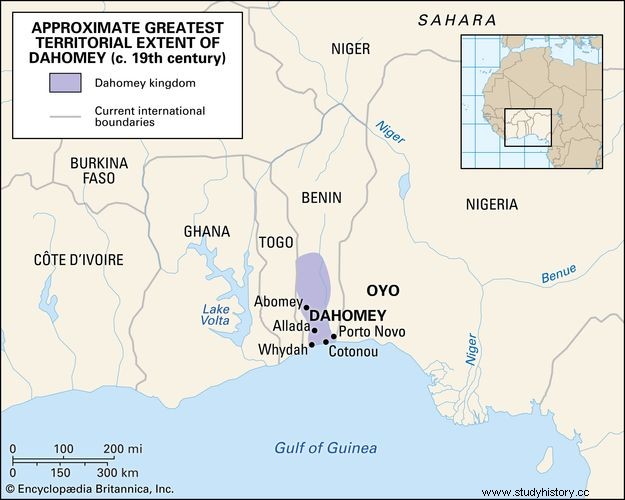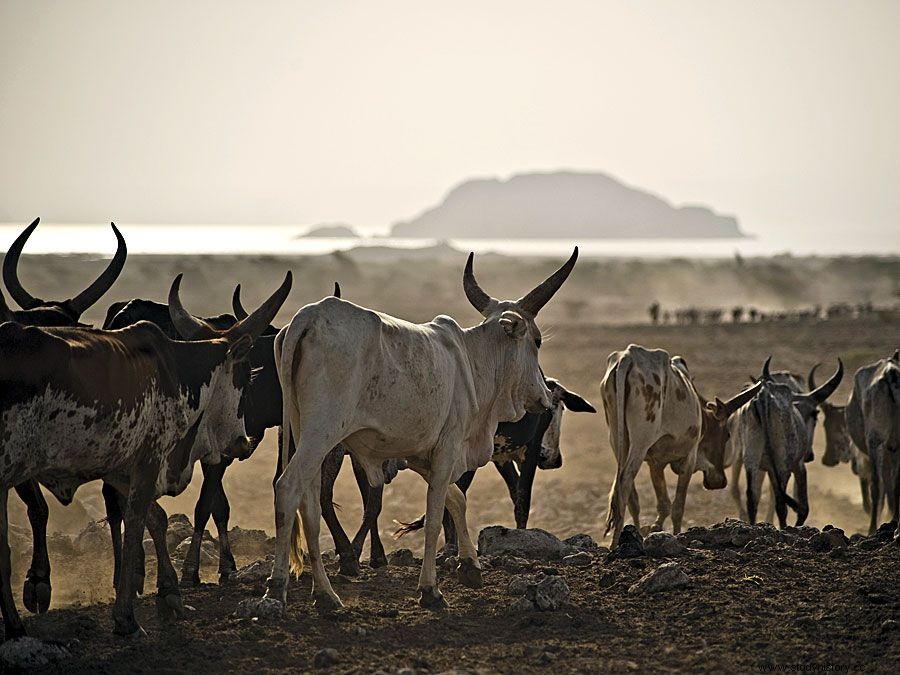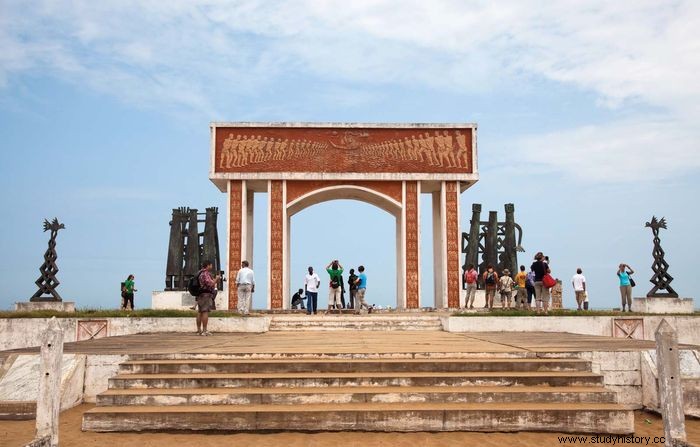Dahomey , kingdom in West Africa , used in the southern region in the 18th and 19th centuries Benin thrived . Tradition has it that in the early 17th century three brothers competed for the kingdom Allada , which like neighboring Whydah (now) Ouidah ), was in Slave Trade got rich . When one of the brothers gained control of Allada, the other two fled. One went southeast and founded Porto Novo on the coast east of Whydah. The other, Do-Aklin went north to the kingdom Abomey , the core of future Dahomey. They all appreciated the powerful Yoruba Kingdom Oyo to the east.

 Britannica Quiz Destination Africa:Fact or Fiction? Is Africa's northernmost point further north than Europe's southernmost point? See if your geographical knowledge points north or south on this journey through Africa.
Britannica Quiz Destination Africa:Fact or Fiction? Is Africa's northernmost point further north than Europe's southernmost point? See if your geographical knowledge points north or south on this journey through Africa. Do-Akin's grandson Vebaya ( approx. 1645–85) made Abomey a powerful state. He was followed by Aqaba (1685–1708) and Agaja (1708-32). Agaia, who bought weapons from European traders on the Coast des Gulfs of Guinea wanted to buy , conquered Allada (1724) and Whydah (1727) where European forts had already been established. The expanded state was named Dahomey; Abomey, Allada, and Whydah were its provinces. Thrive on selling As slaves the Europeans prospered the kingdom of Dahomey and acquired new provinces under kings Tegbesu (1732–74), Kpengla (1774– 89) and Agonglo (1789–97). After King Adandozan (1797–1818) was overthrown by the great Gezu (1818–58), Dahomey reached the pinnacle of his power and glory.
The kingdom was a unique in Africa shape of absolute monarchy . The king, surrounded by a magnificent entourage, was the undisputed high point a rigidly stratified society of kings, commoners, and slaves. He ruled through a centralized bureaucracy, occupied by citizens who could not threaten his authority. Every male officer in the field had a female counterpart at court who oversaw his activities and advised the king. Captured territories were through intermarriage, uniform laws, and a shared tradition of enmity with the Yoruba assimilates .
Dahomey was organized for war, not only to expand its borders but also to take prisoners as slaves. Slaves were either sold to the Europeans in exchange for weapons or kept on the royal plantations that provided food for the army and court. From about 1680, a regular census was used as the basis for conscription. Female soldiers, called Amazons by Europeans, served as royal bodyguards when not in combat.

Gezu increased the splendor of the court, promoted the arts, and refined the bureaucracy. His armies freed Dahomey from the humiliation of paying tribute to Oyo. After about 1840, however, the fate of the kingdom changed when Britain managed to end the overseas slave trade. Gezu managed a smooth transition to palm oil exports; Slaves were not sold but kept on palm plantations. Palm oil, however, was far less lucrative than slavery, and an economic decline followed under Gezu's successor, Glele (1858–89). When the French took control of Porto-Novo and Cotonou gained and attracted coastal trade there, trade in Whydah collapsed. After joining Behanzin (1889–94) Hostilities were called off. 1892 a French expedition under Colonel. Alfred-Amédée Dodds defeated the Dahomeyans and founded a Protectorate . Behanzin was after West Indies deported . His former kingdom was incorporated into the French colony of Dahomey with its capital in Porto-Novo.
